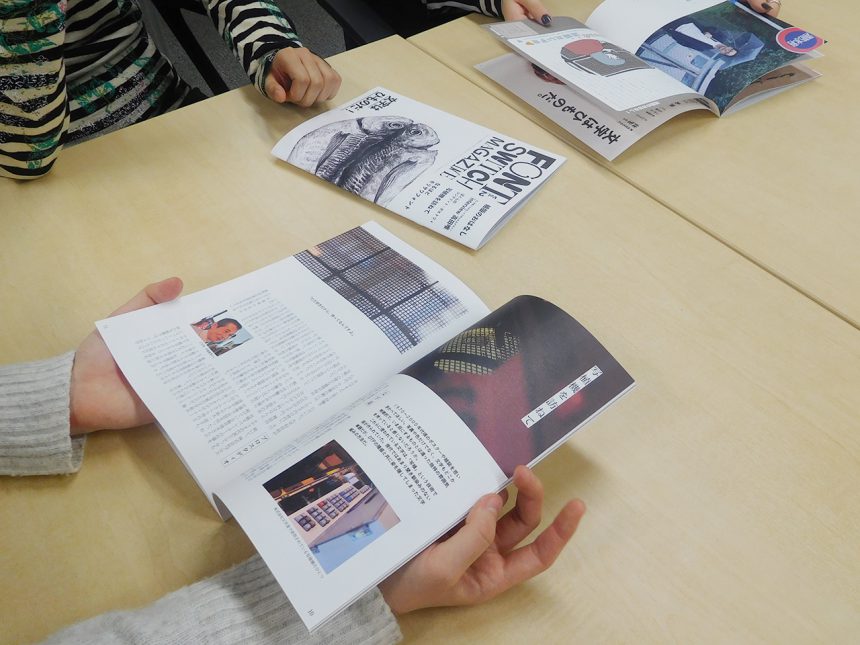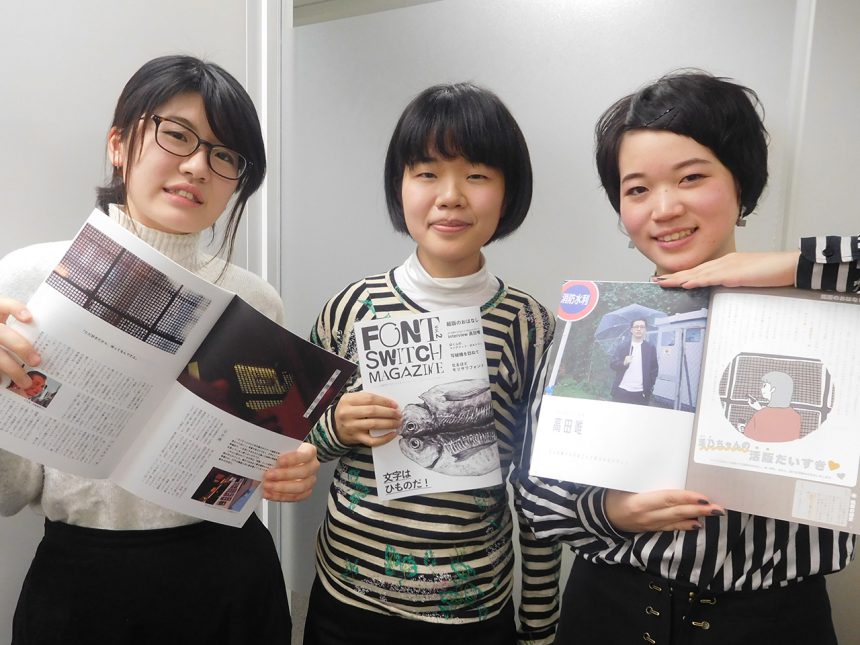
The 2nd Moripass Free Magazine Team successfully completed their magazine in January. Holding the newly completed magazine in their hands, we interviewed Kyoka Naohara (left), Mariko Shimba (center), and Asuka Inaba (right) on behalf of the team.
Q. First of all, what are your honest thoughts on the finished magazine?
Inaba: We all worked together to decide on the size and font of the letters, so I think the end result is good because we put a lot of effort into it.
Shiba: I always want to fix the parts I'm responsible for, but when you look at the whole picture, the colors are consistent and it's very well-made.
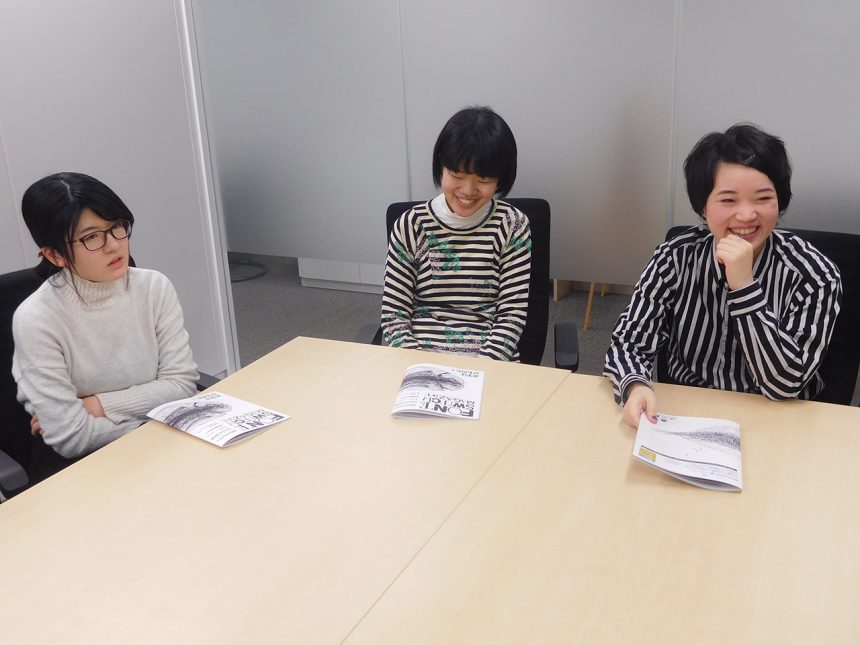
Naohara: When I was making it, I thought, "Magazine production is so troublesome!" But when I received it in a magazine-like format, I think it was something that made people want to read it. Simply being able to read this magazine for free is definitely a good thing!
Q. After completing the individual assignments, you split into teams and began working on the magazine. Please tell us about that process.
Inaba: It was easy to join the group work because we had to individually output our work through the assignments. Once we were divided into teams, we were able to utilize each person's strengths. Is this person good at explaining things, or creating visuals? I think it was also easy to decide on the division of roles.
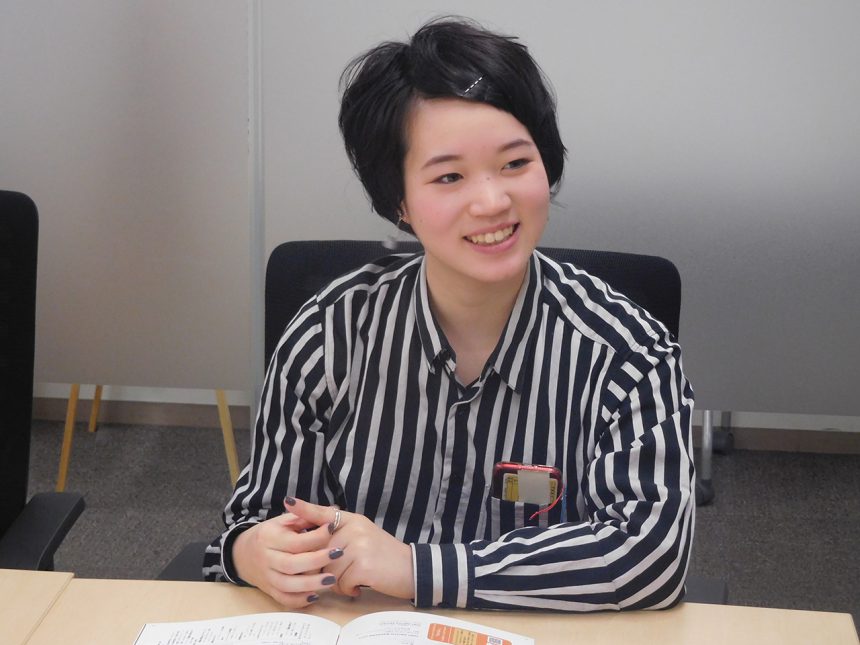
Shimba: When we were working on the first assignment, I was busy with classes at school, so honestly, I would have been happy with something a little lighter. But it was a great process for us to get closer to each other.
Q. How did the group work go?
Naohara: It was extremely difficult. There were many times when we couldn't move forward unless everyone was working toward the same goal, such as the speed of response and the balance between individual tasks and the overall flow. There were also times when communication was difficult, and I realized how difficult it is to share information with a large group of people.
Shimba: Different people could attend each meeting, so it was difficult to get everyone on the same page. It was completely different from group work at school.
Naohara: There were times when we hesitated, wondering, "Is it okay for just these members to decide this?" and we couldn't move forward. It was not good that we didn't clearly decide who would make the final decision.
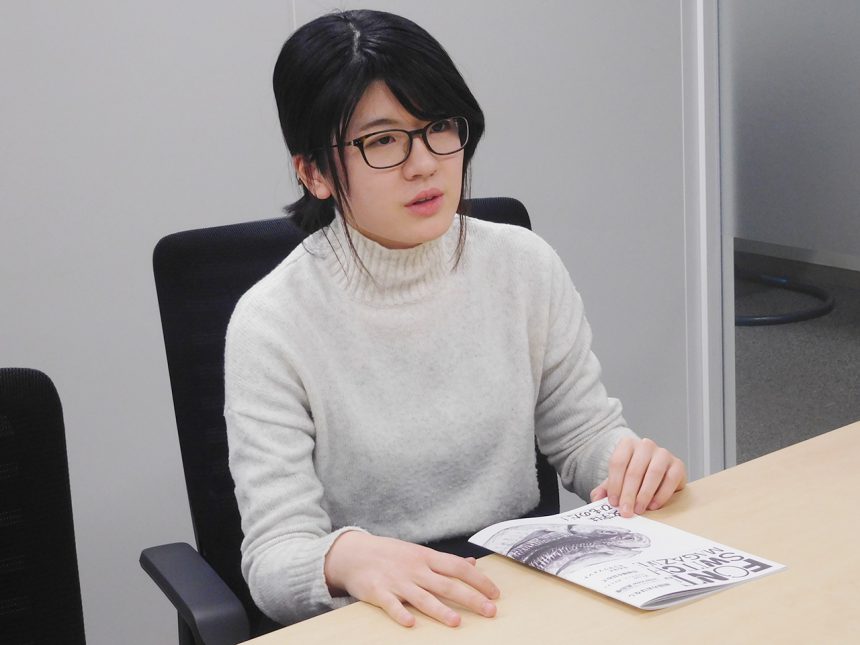
Shiba: In the end, I ended up leaving most of it up to Inaba-san...
Inaba: But I also had some shortcomings, so the other members helped me out and I think we were able to come together well in the end.
Q. What about creating something together with people from different schools?
Inaba: It was a lot of fun. I also noticed the unique personalities of each school, the differences between departments within the same school, and the differences between schools within the same department. I was surprised at how different they were!
Shiba: By learning about everyone else's characteristics, I was able to learn about my own. It was a big discovery for me to realize that "compared to the people around me, I might be good at this."
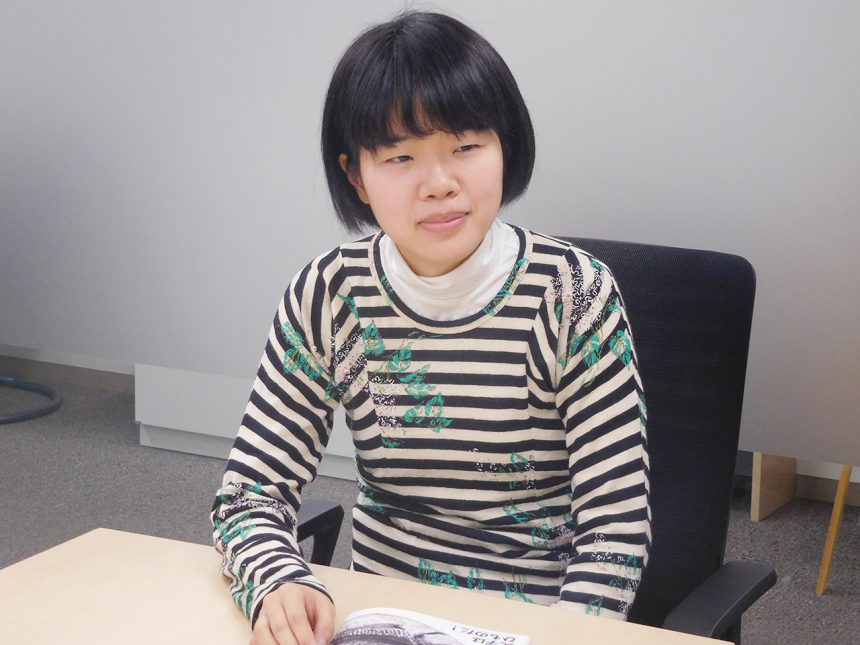
Naohara: Because there were so many people, we were able to exchange opinions on things like fonts, saying things like, "Wouldn't this one be better?" If we had worked individually, we would have ended up just thinking about it, but it was really interesting to be able to have our own ideas and exchange opinions.
Q. Finally, who would you like to read the magazine and what are the highlights?
Inaba: Although it's aimed at students, I'd like professional designers to read it too. Because it's a magazine for students, I'm confident that we can do things that professionals can't and are challenging in some way.
Shimba: In my poster classes, there are a lot of people who say, "The pictures are good, but the typesetting is not good." I think these people are just not as interested in letters as they are in pictures, so I hope this magazine will make them realize that "letters are interesting because there are many different ways of thinking about them."
Naohara: Even if I'm being biased, I think the special feature page on phototypesetting, which is something that is far removed from today's students but is an essential part of the history of writing, is amazing. If you read this magazine and talk to your professor about phototypesetting, it's sure to be a great success!
Because it is something that will remain in a tangible form, the three members were still motivated, saying "I wanted to make it even more like this," even after it was finished. Nevertheless, they seemed to feel a great sense of fulfillment in the high level of completion of the magazine and the hard work they put in over the past six months. We are looking forward to seeing what kind of reactions they get when it is read by many people, not just fellow students, but also professors, professional designers, and more.
